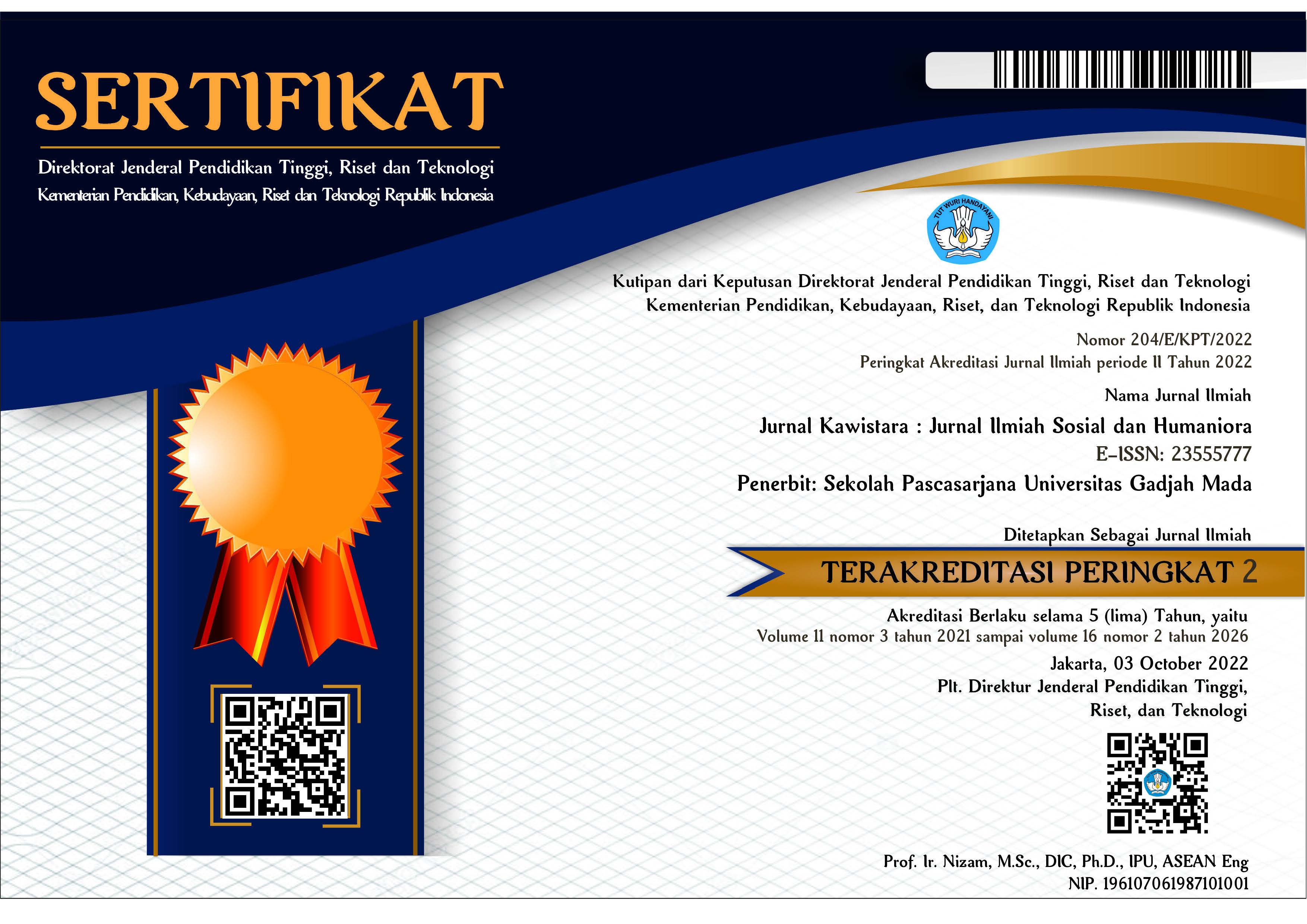AKSIOLOGI TARI BEDHAYA KRATON YOGYAKARTA
Sunaryadi Sunaryadi(1*)
(1) Fakultas Seni Pertunjukan Institut Seni Indonesia - Yogyakarta
(*) Corresponding Author
Abstract
Bedhaya at Palace dance was originally a sacred dance that is laden with symbols of life because it’s
not just a dance movement, but an action that is displayed and that becomes the life reference. Bedhaya
is presented as a mirror of Javanese culture axiological which includes ethical and aesthetic values . It
is a reflection of manunggaling kawula-Gusti in terms of its ethical dimension and it has the aesthetic
values of the motion, fashion, and makeup. Bedhaya dance philosophy is summaried in the doctrine
of ngelmu sangkan paran covering three things: the first it’s related to the human consciousness that
comes from God (urip iki saka sapa); the second, it is irelated to the duties and obligations of human
beings in the world (urip iki arep apa); and the third, it is related to man’s return to his Lord (urip iki
pungkasane piye). Therefore, in the moral ethics context, Javanese life purpose is how to be a good man
to reach the manunggaling kawula with Gusti as it is believed that goodness and beauty (mind) are the
manifestation of the Essence of the Most Holy. The journey of human life portrayed in lampah bedhaya
of majeng beksa , beksa to mundur beksa is a role model to determine the choice between good and bad .
not just a dance movement, but an action that is displayed and that becomes the life reference. Bedhaya
is presented as a mirror of Javanese culture axiological which includes ethical and aesthetic values . It
is a reflection of manunggaling kawula-Gusti in terms of its ethical dimension and it has the aesthetic
values of the motion, fashion, and makeup. Bedhaya dance philosophy is summaried in the doctrine
of ngelmu sangkan paran covering three things: the first it’s related to the human consciousness that
comes from God (urip iki saka sapa); the second, it is irelated to the duties and obligations of human
beings in the world (urip iki arep apa); and the third, it is related to man’s return to his Lord (urip iki
pungkasane piye). Therefore, in the moral ethics context, Javanese life purpose is how to be a good man
to reach the manunggaling kawula with Gusti as it is believed that goodness and beauty (mind) are the
manifestation of the Essence of the Most Holy. The journey of human life portrayed in lampah bedhaya
of majeng beksa , beksa to mundur beksa is a role model to determine the choice between good and bad .
Keywords
Axiology, Bedhaya, Ethical, and Aesthetic
Full Text:
PDFArticle Metrics
Refbacks
- There are currently no refbacks.
Copyright (c)
Jurnal Kawistara is published by the Graduate School, Universitas Gadjah Mada.







